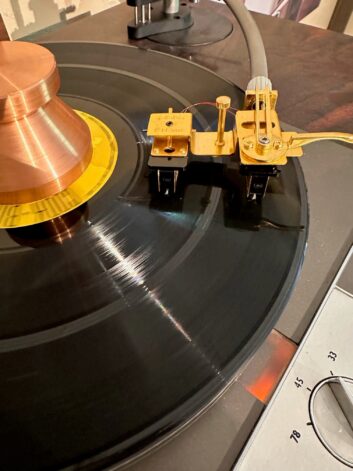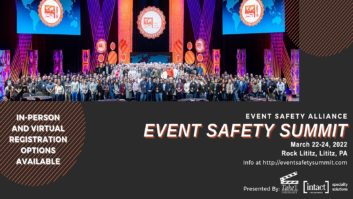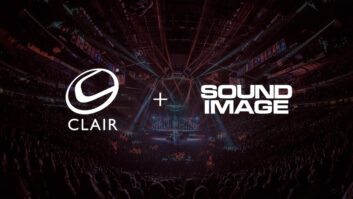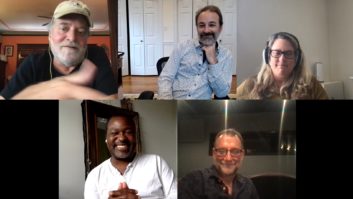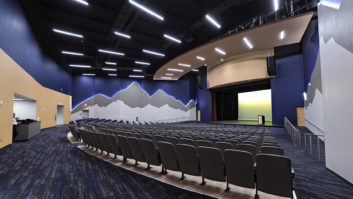Washington, DC (August 21, 2023)—The Library of Congress has announced a daylong series of presentations and evening sound installations in Washington, DC, on August 24 to showcase a range of treasures, technology and history from its recorded sound collection.
Throughout the day, sound engineers and recording historians will present on a unique set of topics covering some of the earliest, most important and most unusual sounds in the library’s holdings in the Whittall Pavilion and Room 119 of the Thomas Jefferson Building. Displays and presentations will include early experiments on cylinders through the many eras of radio broadcasting and the ongoing quest to expand the possibilities and achievements in recording.
Free timed-entry passes, which can be arranged on the library’s site, are required to enter the Thomas Jefferson Building. The evening demonstrations and sound installation will be presented as part of Live at the Library, the library’s Thursday evening series.
Presentations in Room 119
10–10:45 a.m.: A Lasting Impression — The Cylinder Era of Recording: David Sager, reference specialist, and Melissa Widzinski, preservation specialist, National Audio-Visual Conservation Center, look at the history and preservation of the first commercial recordings.
11–11:45 a.m.: The 20th Century on the Radio at the Library of Congress: Matthew Barton, recorded sound curator, National Audio-Visual Conservation Center, reviews highlights of history and entertainment in the Library’s radio broadcast collection.
1:30–2:15 p.m.: Recording World War II on Wire and Film in the 1940s: sound engineer Nick Bergh discusses his work with the National Audio-Visual Conservation Center’s collection of Marine Combat Recordings.
2:45–3:30 p.m.: The Stereo Era begins, 1952–1960: Matthew Barton, and sound engineer Tom Fine explore the progression from mono to stereo in the Hi-Fi era.
4:00–4:45 p.m.: Les Paul and the Early Days of Multi-Tracking: Grammy-winning record producer and sound engineer Steve Rosenthal discusses the preservation work on Les Paul’s collection of recordings at the National Audio-Visual Conservation Center in 2017-18, and curator Perry Margouleff discusses and displays his collection of Les Paul guitars that were integral to his recording process.
READ MORE: National Recording Registry Inducts Class of 2023.
Presentations in Whittall Pavilion
10 a.m.: Binaural Stereo demonstration: In 1952, Emory Cook put stereo on vinyl for the first time, six years ahead of the major labels. It was expensive and cumbersome, requiring a two-headed tonearm to play separate channels pressed onto a disc, but it worked beautifully. Engineers Robin Wyatt and Tom Fine have recreated Cook’s system with a combination of original and modern gear and will play selections from Cook’s binaural stereo catalog and discuss his work and theirs.
11 a.m.: Quadraphonic demonstration: From the late 1960s to the late 1970s, four-channel quadraphonic mixes of music in every genre were the stuff of legend and heated debate. Sound engineer Rob Cristarella has curated a selection of the best and most unusual quadraphonic selections of the era.
(The binaural and quadraphonic demonstrations will be repeated throughout the day, alternating on the hour, with the last demonstration at 5 p.m.)
6 and 7 p.m.: Surround sound history and demonstration: National Audio-Visual Conservation Center Record Lab supervisor and Grammy-winning sound engineer Rob Friedrich will discuss and demonstrate the history of multichannel sound mixing from the early days of stereo to today 5:1 surround mixes.
Sound Installations on Mahogany Row (5-8 p.m.)
In the rooms along Mahogany Row, visitors will hear montages and live original format playback of recordings from the 1890s to the present that have been digitized at the National Audio-Visual Conservation Center, as well as playback of original media.
Visitors will hear the voices of opera greats such as Enrico Caruso and Amalia Galli-Curci alongside the early jazz recordings of Louis Armstrong and other artists from the 1900s to the 2000s, recordings in the many languages and traditions in American music recorded from the dawn of the 20th century forward, as well as historic broadcast excerpts from the library’s vast radio holdings. In addition, visitors will hear demonstrations of multichannel audio from the early days of stereo in the 1950s through the four-channel quadraphonic era of the 1970s through recent surround mixes.
Room 110: Live cylinder playback demonstration
Room 111: Live 78 rpm playback demonstration
Room 112: Pre-recorded audio montages
Room 113: Visual display room with original equipment, original formats
Room 119: Display of Les Paul’s own guitars, used in his historic recordings
The Library of Congress is the world’s largest library, offering access to the creative record of the United States — and extensive materials from around the world — both on-site and online. It is the main research arm of the U.S. Congress and the home of the U.S. Copyright Office.
